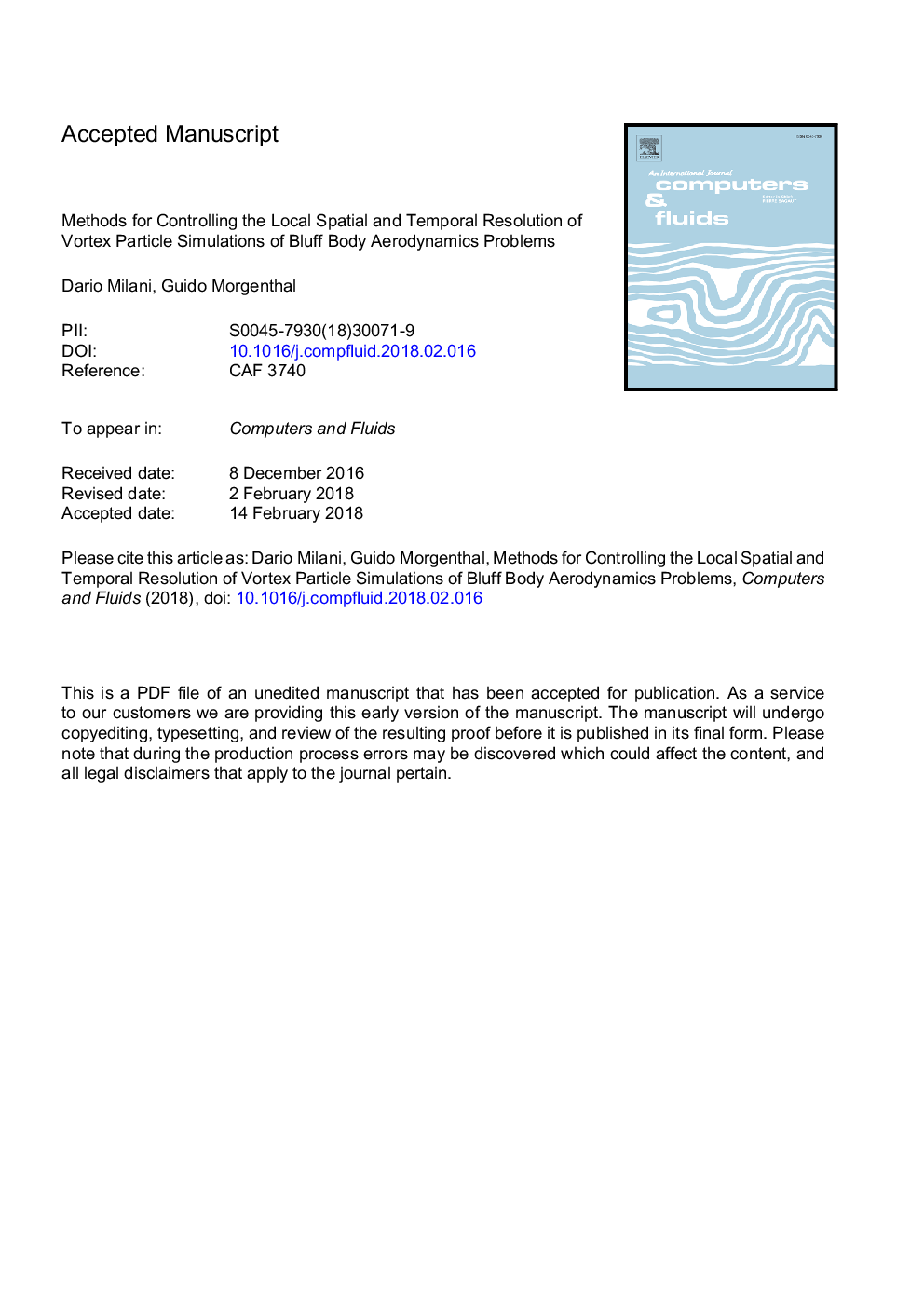| Article ID | Journal | Published Year | Pages | File Type |
|---|---|---|---|---|
| 7156353 | Computers & Fluids | 2018 | 23 Pages |
Abstract
This paper presents a novel adaptive solution strategy for vortex particle methods that allows the efficient resolution of multiple scales that are characteristic of flows around bluff bodies with small structural details. The efficiency of the method arises from maintaining a sufficiently high spatial numerical discretisation near the fluid-solid interface and a progressive coarsening away from the bodies and their structural details. The control of the particle map is achieved through remeshing based on high-order interpolation kernels and ensures an accurate representation of the flow features of different scales whose resolution is critical to an accurate computation of the pressures on the immersed structure subjected to separated flows. As the required time step of the time integration is directly related to the spatial resolution, the adaptivity is further enhanced by a temporal adaptivity realized through a sub-stepping technique for controlling the frequency at which the particle convection and diffusion steps are performed. The validation of the proposed technique is performed by simulations of the impulsively started flow past a circular cylinder at Reynolds number 3000, where both the spatial and the temporal strategies are at first independently studied and then combined to full adaptivity. A substantially higher computational efficiency compared to equally accurate non-adaptive simulations is reported. Further studies of accuracy and efficiency are performed by simulating the flow past the cross section of a bridge arch geometry featuring small structural details. Solution properties studied include the resolution of local velocity profiles and global aerodynamic coefficients. These reveal how the application of the full adaptive strategy enables for the accurate and efficient prediction of the flow features. The results indicate speed-ups of up to factor 4 to 5 when comparing the new approach to the classical Vortex Particle Method.
Related Topics
Physical Sciences and Engineering
Engineering
Computational Mechanics
Authors
Dario Milani, Guido Morgenthal,
